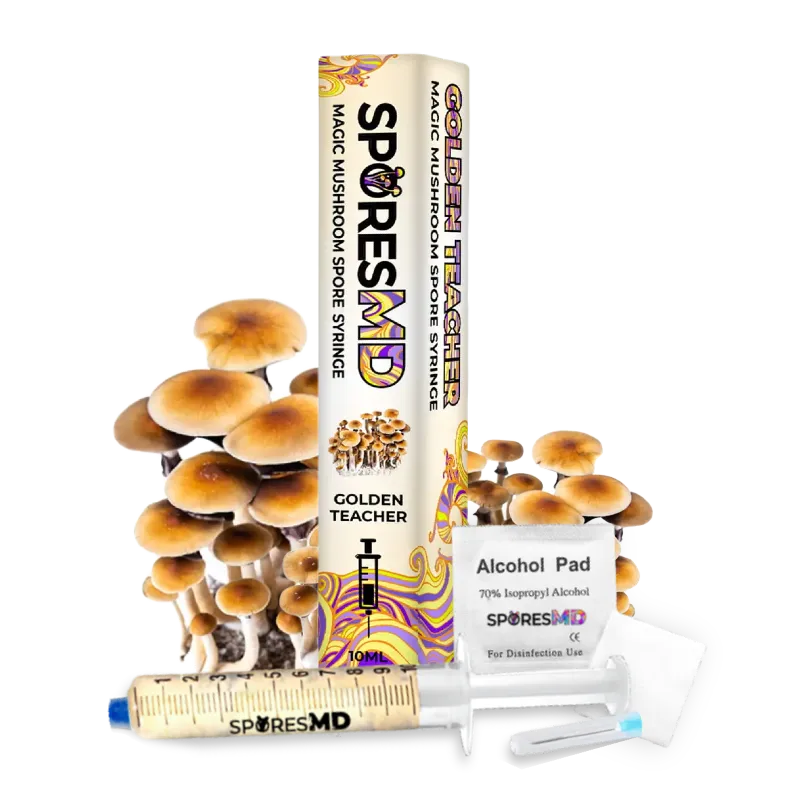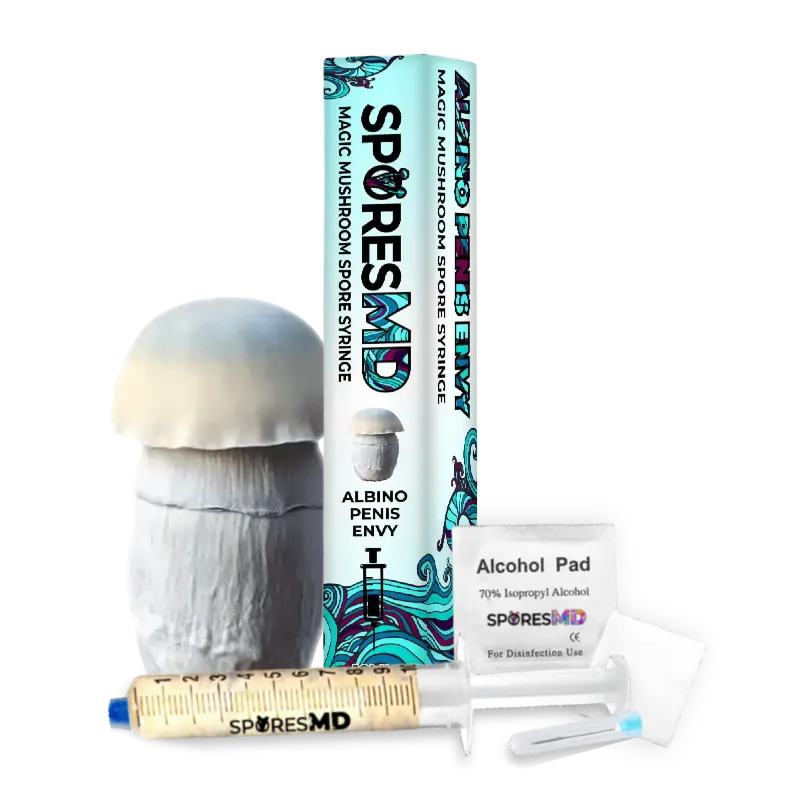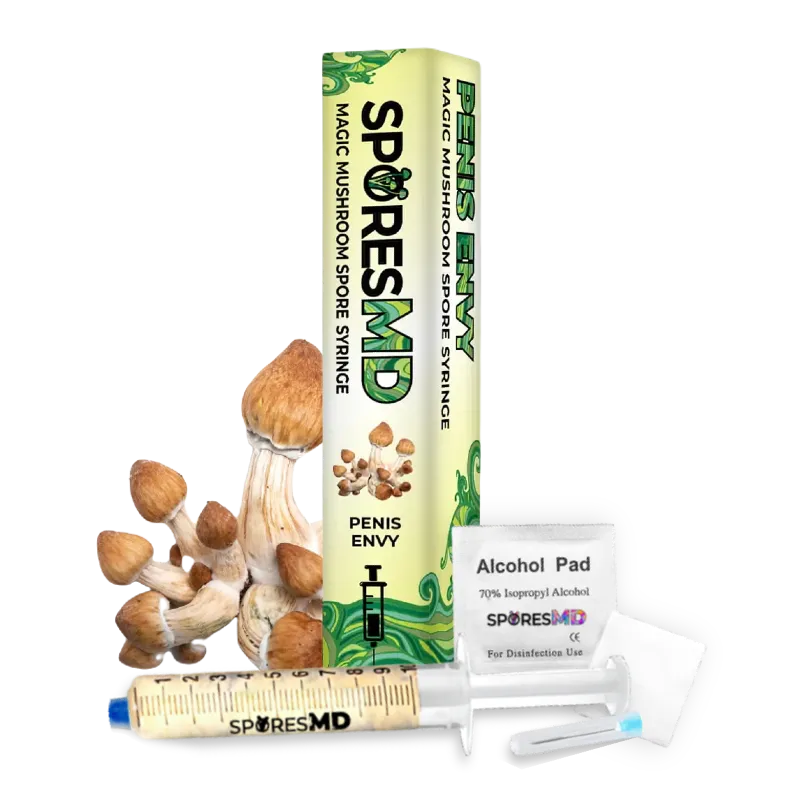Mushroom Spores. They’re everywhere. But are they a threat to you? Recent research has thrown light on a disturbing fact. Not all spores are harmless passengers in our environment. Some, like those from the mold Aspergillus fumigatus, bring health risks right into our homes and workplaces.
With nearly half of US houses showing significant mold levels and a notable connection between mold exposure and respiratory issues, it’s clear: spores can be harmful. This revelation isn’t just about the molds but extends to other dampness-related microbes and biotoxins that compromise indoor air quality. Understanding the impact of spores on human health is crucial, especially when up to 21% of asthma cases might be linked to mold exposure. Let’s dive deeper into how these microscopic entities affect us and what that means for your well-being.
Key Takeaways
- Not all spores are harmless: Certain types, like those from mold Aspergillus fumigatus, can pose significant health risks, especially in damp indoor environments, affecting air quality and potentially contributing to respiratory issues.
- Understanding and minimizing exposure is key: Knowing the types of spores, their habitats, and how they can impact health enables individuals to take preventive steps, such as controlling indoor humidity, increasing airflow, and maintaining cleanliness to minimize spore proliferation.
- Immediate to long-term health effects: Exposure can lead to a range of symptoms from sneezing and nasal congestion to more serious conditions such as chronic sinusitis or asthma exacerbation, with the elderly, infants, and those with weakened immune systems at greater risk.
- Professional help for remediation: For significant mold problems or to ensure safe removal of spores, professional remediation services like those mentioned for SporesMD are recommended to prevent health risks and future growth effectively.
- Regular inspections and maintenance matter: Implementing regular home inspections for mold, maintaining an environment with low humidity, and ensuring good air circulation are crucial in reducing the risk of spore growth and maintaining a healthier living space.
- Stay informed and take action: Awareness of the types of spores, their effects on health, and methods for prevention and remediation helps individuals make informed decisions to protect themselves and their loved ones from potential spore-related health risks.
Understanding Spores and Their Impact on Human Health
Spores, tiny and seemingly inconsequential, play a massive role in our environment. However, when it comes to human health, their impact can be significant. From the mushrooms blooming in your yard to the mold growing in damp areas of your home, spores are everywhere. Knowing how they affect health is crucial, especially for those with pre-existing conditions like asthma.
What Are Spores?
Spores are reproductive units produced by fungi, including molds, mushrooms, and mushroom spore syringes. These microscopic particles can travel through the air, making them easy to inhale without even realizing it. While many spores are harmless, some can pose health risks, especially when they enter our homes and workplaces.
Types of Spores and Their Habitats
Spores thrive in various environments, but they particularly love moist, warm areas. Understanding the different types and where they’re found can help you minimize exposure:
- Mold Spores: Found in damp indoor areas like bathrooms, kitchens, and basements. Reducing humidity and fixing leaks can help control their spread.
- Mushroom Spores: Common in outdoor spaces, especially in gardens and wooded areas. While some are beneficial, others can cause health issues if inhaled.
- Pathogenic Spores: Certain types, such as those from Aspergillus fumigatus, can cause serious diseases, particularly in those with weakened immune systems.
Minimizing Exposure and Protecting Health
Knowing the types of spores and their preferred habitats allows you to take steps to minimize your exposure. Regular cleaning, maintaining indoor air quality, and using dehumidifiers can significantly reduce your risk of spore-related health issues. For those interested in mushrooms, selecting the right spores for cultivation is essential.
While spores are a natural part of our environment, understanding their impact on human health is crucial. By taking preventive measures and making informed choices, you can protect yourself and your loved ones from potential health risks associated with spore exposure.
Health Effects of Spore Exposure
Understanding the health ramifications of spore exposure is vital in navigating environments prone to their presence. With an array of spores circulating in various settings, recognizing the symptoms and risks associated is the first step toward safeguarding your health.
Short-Term Symptoms of Spore Inhalation
Immediate reactions to spore inhalation can range from mild to severe, depending on the spore type and individual sensitivities. Key symptoms include:
- Sneezing and nasal congestion
- Itchy eyes, mouth, or skin
- Throat irritation
- Wheezing and difficulty breathing
Long-Term Health Risks Associated with Spores
Prolonged exposure to certain spores can escalate beyond temporary discomfort, ushering in more grave health issues. Documented effects include:
- Chronic sinusitis or asthma aggravation
- Hypersensitivity pneumonitis, an inflammatory response in the lungs
- Opportunistic infections, especially in immune-compromised individuals
Vulnerable Populations: Who’s at Greater Risk?
Certain individuals may find themselves more vulnerable to the adverse effects of spore exposure:
- Infants and children
- The elderly
- Individuals with existing respiratory conditions like asthma or COPD
- People with compromised immune systems
For those in high-risk categories, mitigating exposure is paramount, underscoring the importance of air quality management in homes and workplaces.
In navigating environments with spores, awareness and prevention are your best defenses. Regular cleaning, maintaining indoor air quality, and choosing reputable sources for spore-related activities play crucial roles in minimizing health risks. Stay informed, stay prepared, and prioritize your health in spore-prone settings.
Mold and Fungal Spores: A Closer Look
Identifying Mold and Fungal Spores in Your Environment
Identifying the presence of mold and fungal spores in your environment is crucial for maintaining a healthy living space. Mold thrives in damp, humid conditions, often found in basements, bathrooms, and kitchens. Fungal spores, invisible to the naked eye, circulate in the air and can enter your home through windows, doors, or attach to clothing and pets.
- Visual Inspection: Look for discoloration on walls, ceilings, and floors. Mold appears as fuzzy or slimy patches of white, black, green, or yellow.
- Smell Test: A musty, earthy odor often indicates mold presence.
- Humidity Levels: High humidity levels, above 60%, can promote mold growth. Use a hygrometer to monitor indoor humidity.
Reducing moisture and improving ventilation are key strategies to prevent mold growth.
The Truth About Black Mold
Black mold, or Stachybotrys chartarum, has been a topic of significant concern due to its potential health implications. It’s especially concerning when found in water-damaged buildings, as its spores can produce toxins that, when inhaled, can lead to severe health issues.
- Toxigenic: Produces mycotoxins that can lead to respiratory issues, headaches, and fatigue.
- Identification: Black mold is distinguished by its slimy, black appearance and musty smell.
- Removal: Professional remediation is recommended because improper handling can release and spread toxic spores.
Awareness and prompt action are essential. For areas suspected of severe mold growth, don’t attempt DIY; hire professionals who specialize in mold removal to ensure your space is safely and thoroughly treated.
Mold and fungal spores pose real health risks, especially for individuals with respiratory conditions or compromised immune systems. Regular inspections and maintenance of an environment with low humidity and good air circulation can significantly reduce the risk of mold growth and spore proliferation. Taking proactive steps toward mold prevention and remediation supports a healthier living and working space for everyone.
Preventing and Addressing Spore Exposure
In the fight against harmful spores, knowledge and action go hand in hand. You’ve learned about the risks; now, let’s dive into strategies for minimizing indoor spore proliferation and the best ways to safely remove spores if they’ve already made themselves at home.
Strategies to Minimize Indoor Spore Proliferation
Keeping your environment spore-free revolves around controlling moisture and maintaining cleanliness. Here’s how:
- Reduce Humidity: Aim to keep indoor humidity below 50%. Use dehumidifiers and air conditioners to maintain a dry environment.
- Ventilate: Increase airflow in your home by utilizing exhaust fans, especially in moisture-prone areas like bathrooms and kitchens.
- Fix Leaks: Regularly inspect your home for leaks and fix them promptly to prevent moisture accumulation.
- Clean Routinely: Dust and vacuum your home regularly to remove potential mold spores.
- Monitor Indoor Plants: Plants can harbor mold in their soil, so keep them well-maintained and free of mold growth.
Remediation: How to Safely Remove Spores
Discovered a mold problem? It’s crucial to tackle it head-on, safely. Here’s what you need to know:
- Assessment: If you suspect mold growth, assess the area. Visible mold or a musty smell are telltale signs.
- Professional Help: For extensive mold issues or if you have health concerns, seek professional remediation services.
- DIY Cleanup: For small areas, wearing protective gear (gloves, mask), carefully clean the mold with a mixture of detergent and water. Never mix bleach with other chemicals.
- Prevent Future Growth: Post-removal, use the strategies above to prevent mold from returning.
By integrating these practices into your routine, you can significantly mitigate the risks associated with spore exposure. Remember, in cases of severe infestation, always call in the professionals to ensure a safe and thorough cleanup process. Stay proactive to keep your air clean and your space safe.
Conclusion
Understanding the impact of mushroom spores on your health is crucial for maintaining a safe and comfortable living environment. By identifying potential mold sources early and employing effective prevention strategies, you’re taking important steps to protect yourself and your loved ones. Remember, it’s not just about reacting to visible signs of mold but also about adopting a proactive approach to humidity control, ventilation, and cleanliness. Should you face a significant mold challenge, don’t hesitate to seek professional help to ensure a thorough and safe removal. Armed with the right knowledge and tools, you can significantly reduce the risks associated with spore exposure and enjoy a healthier home.

![Are Spores Harmful to Humans? 5 Key Facts You Need to Know [2024 Guide]](https://sporesmd.com/wp-content/uploads/2024/05/7ShvT4iCjjhF6uM-kAPh4.jpeg)



